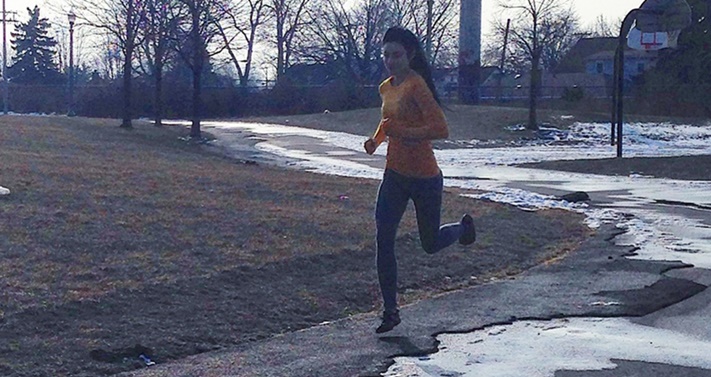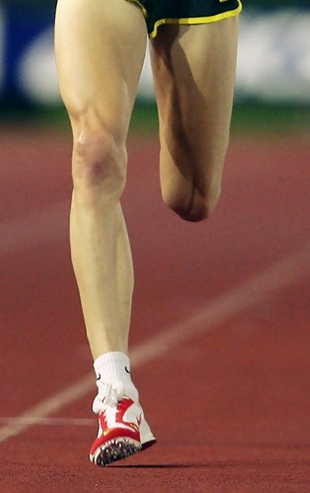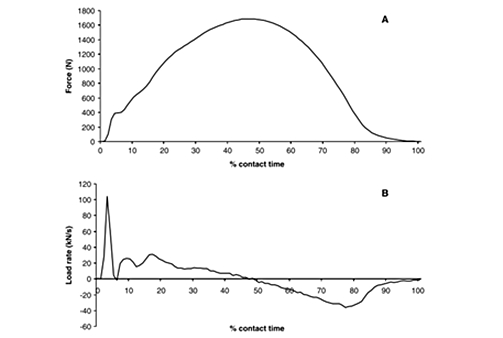You may have heard that if you have high arches, you are going to get injured when you run, or if you have low arches, you’re also going to get hurt while you run, however this is only applicable if you are a heel strike runner. A study by Lees et al., (2005) found that arch height had no effects on force variables in forefoot runners.

Are High or Low Arches Bad for Forefoot Running?
The researchers concluded that the notion of high arches produces a greater force and low arches produces a lower force during running can no longer be substantiated, in the context of forefoot running that is.
The study found that the magnitude of the vertical ground reaction force was not related to arch height in forefoot runners simply because the magnitude of the vertical ground reaction force is more related to body weight and other mechanical variables unrelated to forefoot running.

The researchers then speculated that since arch height was unrelated to shock absorption during forefoot running, impact must be taken up by various structures of the forefoot such as the metatarsal fat pads and deformation of a series of joints.
The researchers also found that the dynamic loading rate of forefoot running gave a continuous curve (shown below) that closely resembled the shock absorbing characteristics of other musculoskeletal segments of the body responsible for shock absorption and vibration dampening behavior.

Evidently, then, the shock absorbing capabilities of the foot operates differently in forefoot running than in heel strike running.
Most notably, the fact that arch height, high or low, had no effects on force and loading variables demonstrates that arch height may not be a causal factor for injury in forefoot running.
So, if you are concerned about your low or high arches being a risk factor for injury, if you are forefoot running, don’t worry about your arches because the structures of the forefoot coupled with forefoot strike mechanics such as ankle plantarflexion at touchdown and forward position of the center of mass have proved to play a bigger role than the arch in buffering against impact.
More From Run Forefoot:
- Not Getting for Forefoot Running Right?
- Forefoot Running Shoe Brands
- Thick Socks, a No-No in Forefoot Running
- Bekele, Salazar and Forefoot Running
References:
Cowan, D; Jones, B; Robinson, J: Medial longitudinal arch height and risk of training associated injury. Med. Sci. Sports Exercise 21:560, 1989.
Giladi, M; Milgrom, C; Stein, M; et al.: The low arch, a protective factor in stress fractures. A prospective study of 295 military recruits. Orthop. Rev. 14:709–712, 1985.
Inman, VT: The joints of the ankle. Baltimore, Williams & Wilkins, 1976.
Lees, L., Lake, M and Klenerman, L. Shock absorption during forefoot running and its relationship to medial longitudinal arch height. Foot & Ankle Inter, 2005; 26(12):1081-88.
Bretta Riches
BSc Neurobiology; MSc Biomechanics candidate, ultra minimalist runner & founder of RunForefoot. I was a heel striker, always injured. I was inspired by the great Tirunesh Dibaba to try forefoot running. Now, I'm injury free. This is why I launched Run Forefoot, to advocate the health & performance benefits of forefoot running and to raise awareness on the dangers of heel striking, because the world needs to know.
Latest posts by Bretta Riches (see all)
- Can You Run In Barefoot Shoes? Yes, But DON’T Heel Strike! - 21/07/2024
- Why Cushioned Running Shoes Are Really Bad for Your Feet - 19/07/2024
- Do Cushioned Running Shoes Cause Injuries? - 17/07/2024

Leave a Reply